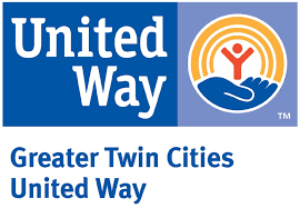Data is the buzzword in business and the charitable sector. Attach words to data such as analytics, warehouse, center, manipulation, etc., and you have bigger words with significant challenges.
Nonprofits have not yet optimized the use of data they have available regarding both clients and donors. Typical estimates point to approximately 15 petabytes (yes, petabytes) of new information being generated every day. So, the issue is no longer centered on just bringing in more data, but rather distilling out data that is usable and actionable.
To accomplish this, you need to be able to answer a few questions:
- How do we best manage data priorities?
- Why is data more important now than five years ago?
- Why is data the ultimate driver of the donor relationship?
To best manage data, you need to do just that, manage it. You need to change the order of data priorities. Typically, you start with objectives — what do we want to accomplish and how do we use data to help us accomplish our objectives. You should start with an internal data inventory, truly understanding the data you have and then developing clear objectives based on that diagnostic.
Most organizations have more data than they know what to do with effectively. Furthermore, 80 percent of organization’s data is unstructured and unconnected, meaning that it is stored in a fragmented, siloed systems environment. The data in the systems resembles a stuffed desk drawer that the organization vows to someday put in an organized sequence.
Again, the key word is “someday.”
Most organizations can’t gain a clear understanding of the depth of their data because it isn’t in a simple, accessible reporting structure. Why develop objectives until you develop your data inventory? Once you truly understand what data you have, you then can build reasonable objectives, centered on improving return on investment (ROI) through better data “decisioning.”
Data has taken on an increasingly more important role today than five years ago because of the sheer growth in the volume and richness of it. More data can certainly help you better target your audience and optimally speak to your donors. Think Business Intelligence, which is typically defined as the collection and reporting of decision-oriented data. This is at the heart of data and analytics. For direct mail, think of the richness of data available within a merge report — data including gross allocation, true demand, and, unique donor by source.
Next, think of the data available within your website — how do users navigate around your site and where do they spend the most time? From where do they typically leave the site? The need for better tools and reporting is essential to make sense of the available data.
In the book “Competing on Analytics,” a study conducted by authors Thomas H. Davenport and Jeanne G. Harris found that high performing organizations are three times more likely to have significant data and analytic capabilities than low-performing organizations. Furthermore, high-performing organizations are four times more likely to “value” data analytics than low-performing organizations.
Do nonprofits understand how to optimize the attribution of sales data coming from multiple channels? Is this information reportable? Sustainable? Repeatable? Let’s spend more resources on mining existing Web, direct mail, TV, social and any other channel data before needing to add more data elements. For sure, it is a combination of data that optimizes the program, but seek internally as the priority, not externally.
Data truly is the driver of the relationship with donors, constituents and volunteers. Do you prioritize building authentic relationships with these groups? Needless to say, you promote to them with great frequency and ask them for money.
But, nonprofits often don’t dialogue with donors. Rather, it’s a monologue. Nonprofits often talk to them, but don’t listen to how they “talk” back through the data. To optimize the share of wallet you need to develop a better relationship with them by listening and understanding them, and then execute based on that understanding.
Segmenting the data and building vertical (specific, targeted) messaging that resonates with the audience are steps to building appropriate relationships. Data segmentation of your donors is not simply the traditional recency, frequency and dollars. Go beyond that. Look at patterns of donations as part of the segmentation strategy.
For example, if a donor has given specifically during the holiday season for the past three years, are they being treated as an active donor, meaning that they probably get 12 to 15 appeals per year? Isn’t there a better communication stream in this case?
Beyond even this level of segmentation is modeling, which gives you the ability to create a greater level of predictability about donor behavior.
Use the data within. It can help you understand which channel or channels donors prefer to correspond with you. Understand how often they want to hear from you. Understand how and why they are connected to the organization. Understand what form of long-term giving might interest them the most. And, the data can also simply be used to determine the best way to say “Thank You” to your audience.
***
Mike Cousineau is the CEO at data and information firm paradysz, with offices in New York City, Minneapolis, Minn., and five other cities. His email is [email protected]











